GoDaddy's shift towards a design-driven development model is still nascent, having most recently been handled solely by marketers. All aspects of the pre- and post-purchase experience were focused on selling more services, with minimal attention given to supporting customer success with paid services. Dark patterns abound. And though for many customers, services didn't involve major hands-on configuration time, deeper satisfaction and confidence with the logged-in experience were not within reach.
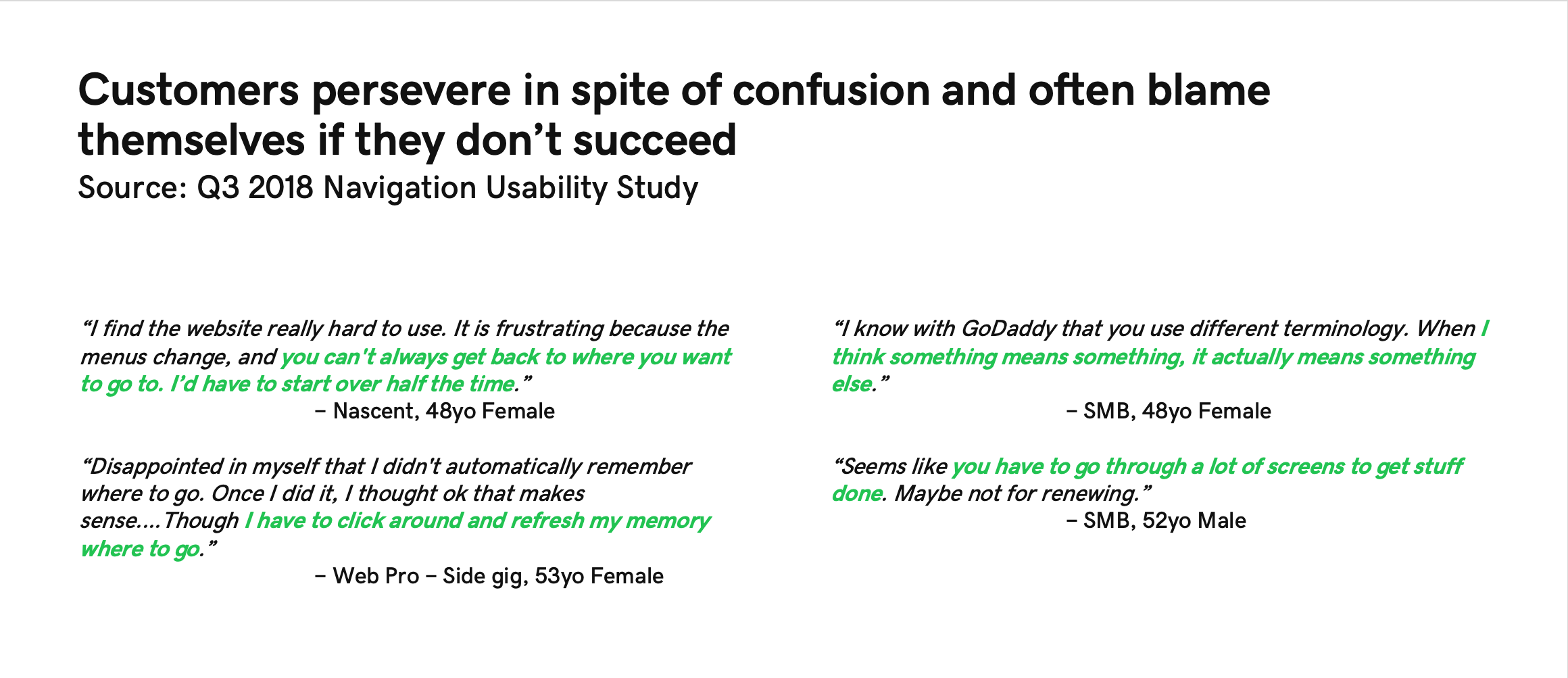
Wanting to improve customer perception and satisfaction, GoDaddy assembled a team in Kirkland to explore opportunities for change. Internal sentiment for the work was a roar of thunder — input, opinions, and requests poured in from across the company to rethink nearly everything from the visual look and feel to the way customers manage their recurring billing.
Under the GoDaddy umbrella, most customers leverage 2-3 products, while over 30 are available. Our team committed to refreshing the initial logged-in screen: an overview and pathing stage directing to product-owned dashboards which I focused on, as well as the whole of user account management, led by several of my peers.
For a new team and workstream, the weight of expectations for significant change were unusually high at GoDaddy. Across the company, the desire to 'be there' for our customer was a unifying force. I leaned deeply into direct insights and verbatims from users to provide guideposts to our initial milestones.

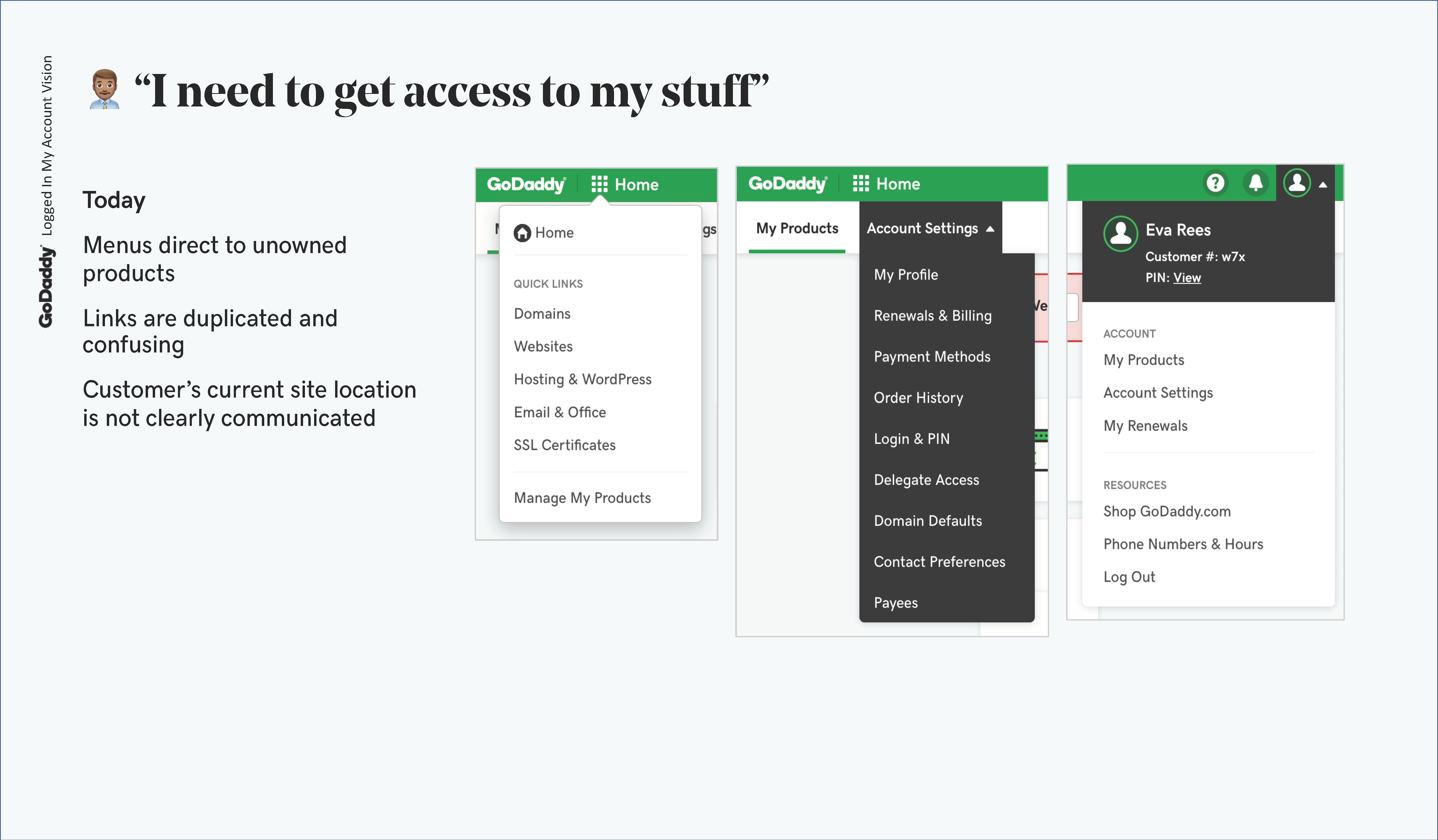

My priority was to begin getting directional feedback from our users to slice through the broad-ranging recommendations and explorations being directed at the workstream. I partnered with a dedicated researcher to craft immersive studies to start a process of gathering and responding to qualitative learnings, and educate project supporters along the way.
For much of our leadership team, a visual refresh was a priority, but no design system had been locked in and there was a immense range of opinions. The first major phase of the work was driven by significant internal workshopping to meaningfully articulate stakeholder desires, and explore feasibility of dramatic change. I learned the limitations of our playground, and built support from engineering for large initiatives, including launching an entirely new organizational construct. While exploring new navigation and information architecture to alleviate utilitarian user needs, I also build out design variants. Leaning into bold strokes, I ultimately created a collection of prototypes which solved core problems in dramatically different ways.
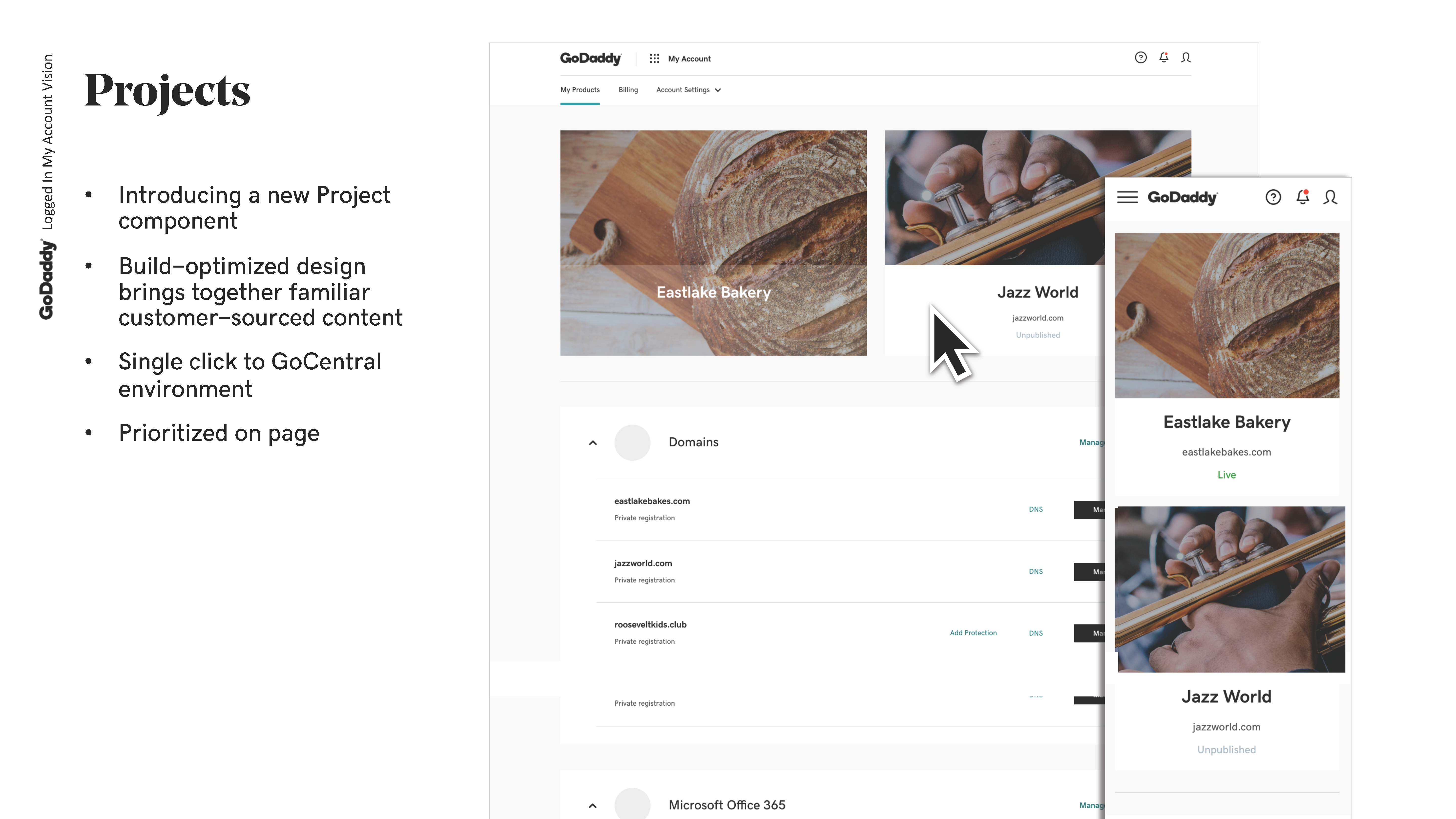
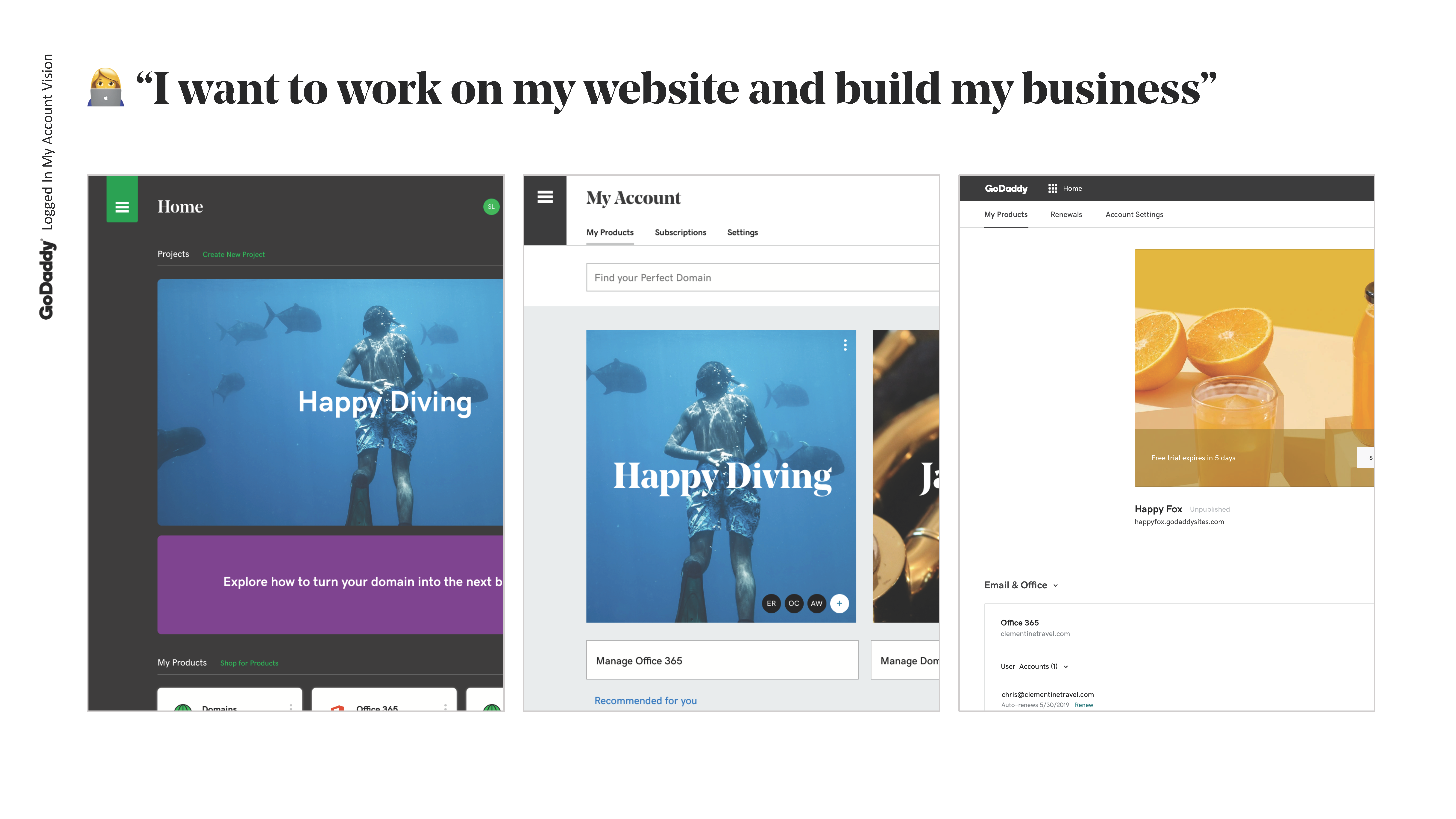
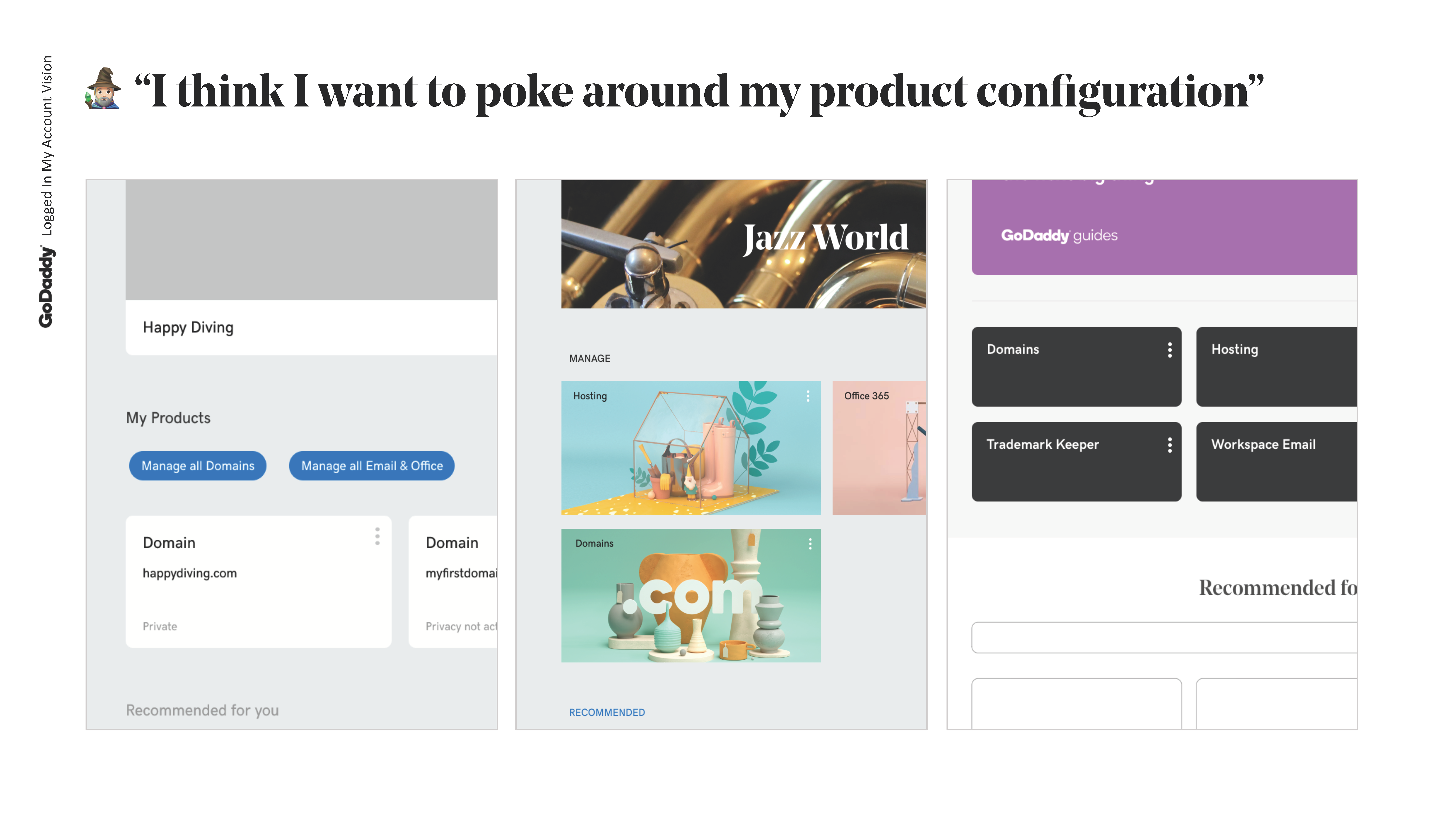
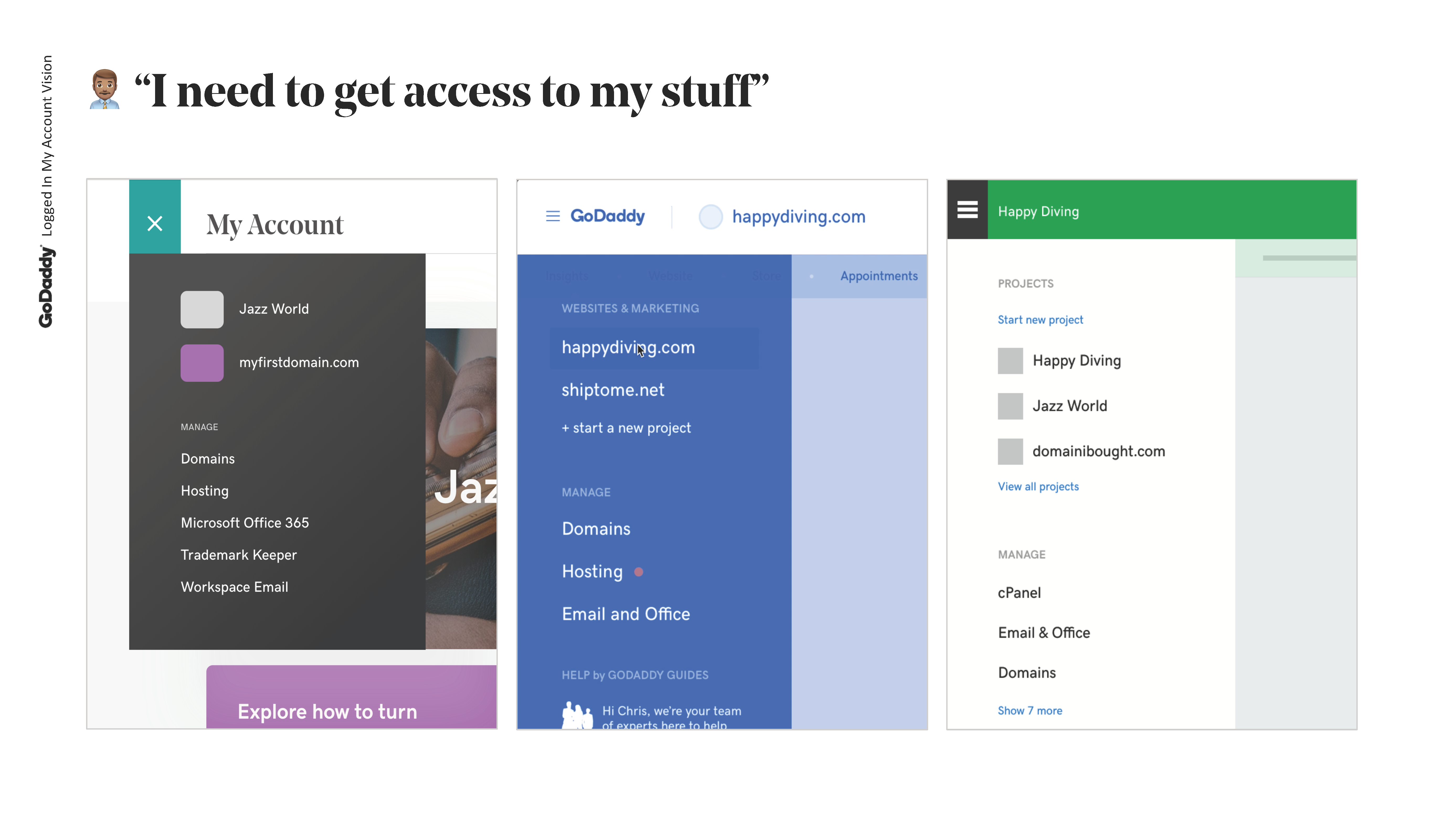
These prototypes were used for qualitative research, and allowed existing users to interact with their products in new ways. Sessions generated verbatims, feedback, new insights, and most importantly, gave us the necessary directional guidance to properly hone a robust design system, and tackle complex wayfinding.
Though the exercise to create a collection of vastly different, bold and strong variants solving against the same core problem was challenging, I felt deeply rewarded by my leadership team, stakeholders, and onlookers. The excitement to see these myriad options was palpable, and I believe these explorations helped soothe feelings of disenfranchisement, critically positioning the effort towards success.
Evolution of the design system began in tandem with remote designers, but progressed smoothly and efficiently. Proper documentation and access to new components would be key for users to see end-to-end consistency, as most environments on the logged-in experience were owned by separate teams.
For the portions of the experience we were able to control, I built out a experimentation plan with engineers to tackle component updates efficiently with sensible milestones of quantitative assessment. We agreed to take our time, and move in small steps. Each product and component required a great deal of discovery and listening workshops with partner teams, to fully understand gaps, opportunities, and requirements.

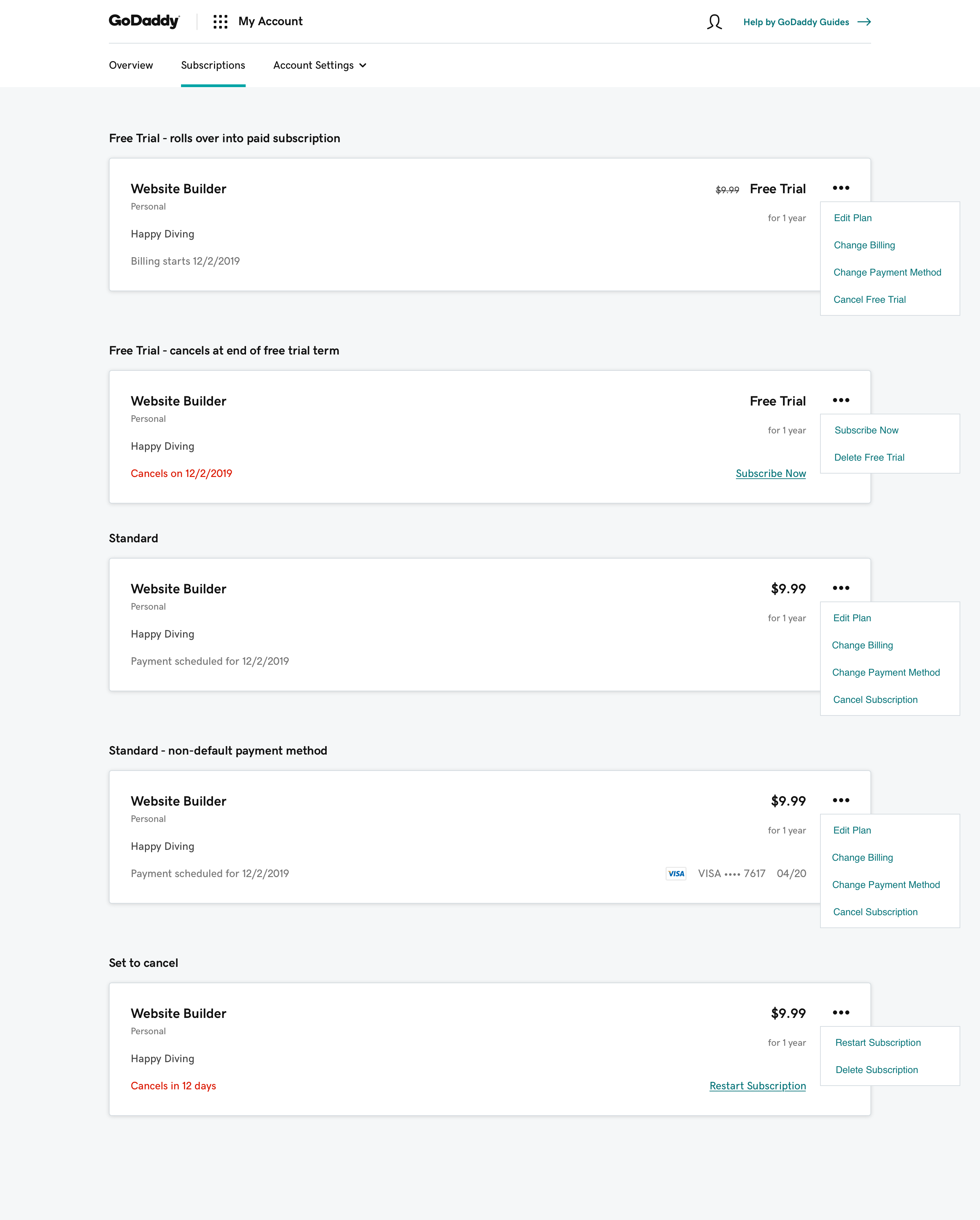
Everyone I encountered at GoDaddy deeply respects and empathizes with their customer. Being able to connect my internal partners and stakeholders to their users and define sensible decisions against real people's needs felt transformative and rewarding. I'm grateful to have been part of GoDaddy's shift towards their customer and this enjoyable and diverse project.